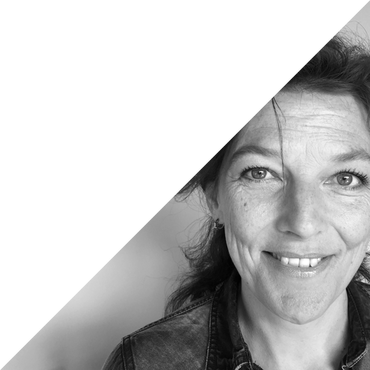Eighty thousand newly-arrived immigrants in the Netherlands must pass a civic integration exam. To prepare them for this series of tests, they can attend a civic integration course. The supply of schools, however, is plentiful and their quality varies.
For most of these newcomers, making this decision simply isn’t possible on their own, the Dutch Court of Audits concluded recently. The Court of Audits, or Algemene Rekenkamer, is the government body that investigates the efficacy of federal policy in the Netherlands. Newcomers who are required to take part in civic integration have absolutely no means of comparing the price, quality, and results of different schools. And there’s no one assessing the quality of the courses.
Last month, research by De Correspondent revealed something else:
- About 65% of the newly-arrived immigrants needed help in choosing a class.
- Some 20% of them were “dissatisfied” with the course they had chosen, while roughly half of respondents were “satisfied”.
This, despite how important it is to find the right course. It’s important to the refugee who wants to start building a new life in our country. And it’s important to society, as civic integration cost the state at least 130 million euros in 2016.
For ten years now, Blik op Werk certification has been used to guarantee the quality of civic integration courses. But the most important criterion, the quality of the education itself, isn’t being evaluated. Lodewijk Asscher, Minister of Social Affairs, is aiming to change this in the near future. While he hadn’t planned on making the news public just yet, I discovered that the Language Education Quality Group has been commissioned to evaluate all of the schools based on quality of their lessons.
When it comes to teaching people a new language, the quality of education is primarily determined by language exposure and the quality of the teacher. In other words, language learners should speak and read Dutch as often as they can, and should be taught by a competent teacher. KET has been given two years’ time to visit all the companies offering civic integration courses and to see how well they are doing in these areas.
Until then, here are ten tips to help you find the right course for you.
1. Get yourself some help
Start with the local authorities, since you will have to contact them anyway to apply for welfare benefits and grants. Local governments receive extra funding to provide refugees with public aid and services. Often, they’re familiar with the schools in the area.
Are you in touch with others from your home country who are already attending classes? If so, ask them for advice
You can turn to Vluchtelingenwerk for advice, too, although you should be aware that it’s staffed by volunteers whose knowledge of the integration process may not be 100%. If a volunteer refers you to a school run by VluchtelingenWerk, also ask what other schools are available.
Are you in touch with others from your home country, who are already attending civic integration classes? If so, ask them for advice. Many highly-educated Syrians are already doing this, as Els Verplancke from Inburgeringscursus Lest Best in Utrecht notes. “They hear about our classes on Facebook, or by word-of-mouth, but they never seem to find us through the Blik op Werk website.”
Still, that’s the route the Dutch government recommends. Which brings me to the next tip.
2. Check out the Blik op Werk website, despite its flaws
Blik op Werk is an independent institute that inspects schools offering civic integration courses. Only when the school you’re attending has been certified by Blik op Werk can you borrow money from the Ministry of Education.
You’ll notice their website isn’t exactly a model of clarity. The limited English version includes a video on how to navigate the Dutch site, for instance. Not the easiest way to work.
And say you’re looking for a civic integration course in Rotterdam, suitable for someone with no higher education: the site will give you the names of eight certified schools. The highest score belongs to PIBLW, which scores an 8.7 for user satisfaction (scores are indicated by participants at the end of their course). But when you click on “contact”, it turns out that PIBLW doesn’t offer any classes in Rotterdam: instead, it operates multiple locations in Zeeland – a whole other province of the Netherlands.
According to Director Lidy Schilder, this is a glitch in the search engine. Although they’ve known about the problem for six months, the organization is waiting for funding before addressing the issue.
The work-around is using the map to search for a school. When you do, you’ll find nineteen schools with the Blik op Werk seal of approval. This means the school keeps the required records.
You can also see what each school’s success rate is, but not whether someone has earned their diploma within the required term of three years. Participants who dropped out halfway through the course, or transferred to a different school, aren’t included in these figures. In other words, a high success rate doesn’t mean much. People attending the courses can give satisfaction scores as well. These should probably be taken with a grain of salt, since a person attending only one school has no basis for comparison.
Other than that, Blik op Werk’s website doesn’t have much to say about the quality of the classes – but that’s about to change. In the next two years, education experts will be evaluating all civic integration schools in the country. Until their report comes out, you’ll have to find out for yourself whether a particular school’s classes are up to scratch.
3. Don’t rush to a decision
While you might be tempted to choose quickly, since you only have three years to complete your integration, you should take some time and consider carefully. According to Blik op Werk, many students switch courses after the first few months because they are unhappy with the one they initially picked. Syrians in particular are dissatisfied if they are frequently asked to work independently; they prefer traditional didactic teaching.
But transferring to another course can cost you a great deal of time, and therefore money. Els Verplancke organizes integration courses for immigrants with some higher education. She tells me it took one of her students three months to transfer from the ROC in Tiel to Verplancke’s school in Utrecht.
4. Ask yourself: What’s my goal?
Remember that a civic integration course lasts at least a year, and in most cases longer. Choose a course that’s a good match for you. If you have school-age children, register for an integration class that meets while they’re at school. Do you plan to start working or volunteering soon? Consider evening classes. If you’re interested in continuing your education, try to decide if this will be feasible. Do you have a university degree, speak fluent English, and have plenty of time for schoolwork? Then choose a course that will get you to B1 level, or prepare you for the state examination.
Do you plan to start working or volunteering soon? Consider evening classes
An example: say there’s a Syrian man who attended university in Damascus, but hasn’t completed his degree. He wants to continue his education in the Netherlands, so he chooses a course at the higher, B1 level from a regional training center (called an ROC). He decides he doesn’t like the teacher, so after three months he transfers to a school run by VluchtelingenWerk. There, he attends class three mornings a week; the rest of the course is independent study.
He’s unable to study at home, however, because he’s too distracted by caring for his young children and worrying about the rest of his family’s situation in Syria. After eighteen months, city officials say he has to get a job, so he can no longer make it to school during the day. Now he has to go back to the ROC for night classes – and he only has one year left to earn his civic integration diploma. Learning Dutch turns out to be more difficult than he thought. Further education isn’t going to be feasible, and he’s out a lot of money for a course he couldn’t attend because he had to work.
5. Look beyond your own local community
This tip is primarily for people who live in smaller towns. If you don’t mind commuting – or if you can’t find a good school where you live – try looking in a nearby city.
Perhaps you prefer smaller classes, or a course that emphasizes conversational practice, saving the computer assignments for at home. In that case, don’t simply sign up for the course that’s closest to home. Take a good look and choose the one that offers what you’re looking for.
Not all local governments will encourage you to attend class in another town. They might not offer a travel allowance, for instance, or may not know much about the classes offered in neighboring towns, even though the differences between two cities can be significant.
6. Find out if travel costs are covered
Every town has its own approach. If you live in Woerden or Gouda, for instance, you’ll get a travel allowance to attend a course in Utrecht; but if you live in Veenendaal, you most likely won’t.
Sometimes a school has a deal in place with the local public transportation company
As a refugee, you don’t get to choose which city to live in – which means your options are limited to those offered by the city you’re assigned. City council elections will be held next year in the Netherlands. If you’ve been a legal resident of the Netherlands for five years, you can vote for a party that promises to do something about this issue.
In the meantime, seeing as you’re responsible for your own civic integration, your city’s officials cannot prevent you from attending school in a different city. Don’t have a travel allowance? Ask if the school can do something to help you. Some schools have deals with the local public transportation company, so that their students can travel with a discount. Or of course you can pay for your own travel costs.
7. Ask about teaching experience
Don’t be seduced by a free laptop or other gifts – ask about the quality of the lessons. That’s what can have the most impact on your future in the Netherlands. How long has the school been around, what kind of results does it get and what are classes like?
To earn the Blik op Werk seal of approval, 80% of classes must be taught by teachers certified to teach Dutch as a second language, or NT2. Good teachers are in short supply due to the large number of new arrivals – people required to complete a civic integration program – who have come to the Netherlands in recent years. Some classes are taught by inexperienced teachers who have not yet completed their training.
So when you go to an intake interview, you should ask about the prospective teacher. Someone with twenty years’ experience in elementary education might be a much more effective teacher than an expert linguist with no classroom experience. As a lay person, it’s not always easy to recognize what makes a good teacher – so ask the school director explain it to you.
8. Choose the highest level offered
To pass the civic integration exams, you’ll need Dutch skills at the A2 language level. At that level, you can read and speak just enough Dutch to chat with your neighbors, read a simple letter, or take part in a parent-teacher conference at your child’s school.
If you hope to get a job, on the other hand, it would be wise to aim higher. Ask if you can take the class at B1 level, the basic level most Dutch people’s skills meet or exceed. You can always move down a level if you need to in order to pass your civic integration exam. If you plan to attend a university or university of applied sciences in the Netherlands, you will need skills at the B2 level.
9. Ask about lesson times
Most schools offer no more than nine hours of class per week. This isn’t much, compared to the lesson hours provided to migrants under eighteen years of age. They usually attend a two-year fulltime “transition class” that helps them learn Dutch more quickly.
The small number of lesson hours is the result of a basic calculation on the school’s part. Per three-month period, each student can borrow up to 1,250 euros from DUO, the Education Executive Agency of the Ministry of Education, which issues loans for the civic integration courses.
More class hours will cost you more money, which is something most prospective integration students don’t have. While schools are allowed to offer more hours of lessons per week, doing so involves a financial risk for the school. If a newcomer passes his or her exams, DUO will reimburse the school for the extra lessons; but if the newcomer quits, the school gets nothing.
So if you’re looking for more hours of class each week, contact your school to find out what’s possible. If the school is willing to take a chance on you, it can happen.
10. Speak some Dutch every day
If you want to integrate successfully in the Netherlands, make sure you’re speaking Dutch every single day. Trying to make contact with Dutch people can prove difficult when you don’t speak their language, and Dutch people tend to be a bit reserved anyway. They’re unlikely to just walk up to you and introduce themselves.
On the other hand, the Netherlands is also a country with a strong tradition of volunteerism. All kinds of activities are being organized through welfare organizations, VluchtelingenWerk and other volunteer groups: from cooking together, to singing with women from around the world, to shooting pool in a community center. Once you know where to look, there are plenty of places you can go to practice speaking Dutch.
So again: my suggestion to you is, ask for a little help. You’ll always find someone who can tell you what the options are in your area.
This report is part of the New to the Netherlands initiative, which is made possible by support from the Dioraphte Foundation.
—Translated from Dutch by Liz Gorin and Erica Moore
More on New to the Netherlands:

 Mediocre, overcrowded, and overpriced. Welcome to civics class for refugees
Nearly 80,000 newcomers must pass a civic integration exam within three years of entering the Netherlands. Otherwise they face fines, debt, and their residence permits may be revoked. But our research shows that the current policy doesn’t work.
Mediocre, overcrowded, and overpriced. Welcome to civics class for refugees
Nearly 80,000 newcomers must pass a civic integration exam within three years of entering the Netherlands. Otherwise they face fines, debt, and their residence permits may be revoked. But our research shows that the current policy doesn’t work.

 Refugees on their struggle to look ahead while worrying about those left behind
Bound to their homeland. Fearing for friends and family. Being this close to family reunification. Three insights into how things are going for refugees with a residence permit in the Netherlands.
Refugees on their struggle to look ahead while worrying about those left behind
Bound to their homeland. Fearing for friends and family. Being this close to family reunification. Three insights into how things are going for refugees with a residence permit in the Netherlands.

 The hairdresser’s amazing comeback (or why everybody needs a Fatima)
It took Maher Mansour four years to build a business in this country as successful as the one he’d owned back in Syria, before he lost everything. His dream wouldn’t have come true without Fatima El Kaddouri. If only every refugee had a Fatima.
The hairdresser’s amazing comeback (or why everybody needs a Fatima)
It took Maher Mansour four years to build a business in this country as successful as the one he’d owned back in Syria, before he lost everything. His dream wouldn’t have come true without Fatima El Kaddouri. If only every refugee had a Fatima.




